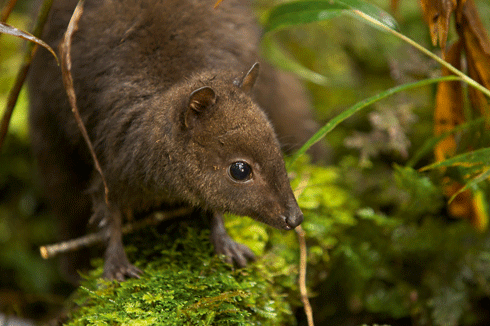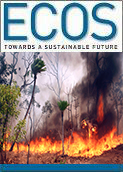
|
Published:
Smallest kangaroo species discovered
The discovery of an array of new species in the Indonesian province of Papua on the island of New Guinea was announced by Conservation International last May, during a week that marked the 2010 International Year of Biodiversity.

|
|
The Wallaby Dorcopsulus sp. nov., the world’s tiniest known member of the kangaroo family, discovered by Kristofer Helgen of the Smithsonian Institution. Credit: Tim Laman
|
The species – which included mammals, reptiles, amphibians, insects and birds – were discovered by a team of international and Indonesian scientists participating in one of Conservation International’s rapid assessment program surveys. Species were tracked for three weeks in the remote Foja Mountains region of the island, which encompasses an area of more than 300?000 square hectares of undeveloped and undisturbed rainforest. The expedition team discovered a forest wallaby (Dorcopsulus sp. nov.) that is the smallest documented member of the kangaroo family in the world, as well as an imperial pigeon, a spike-nosed tree frog, an oversized woolly rat and a gargoyle-like, bent-toed gecko with yellow eyes.
The health and biodiversity of the Foja Mountains region wilderness makes it a critical carbon sink for the planet, as well as providing vital ecosystem services to forest-dwelling peoples who depend on its resources.
‘Places like these represent a healthy future for all of us and show that it is not too late to stop the current species extinction crisis,’ says Dr Beehler, a Senior Research Scientist at Conservation International and expedition participant.
More information:
A related article, with images by Tim Laman, appears in the June issue of National Geographic.
To view more images, go to www.ngm.com/foja



